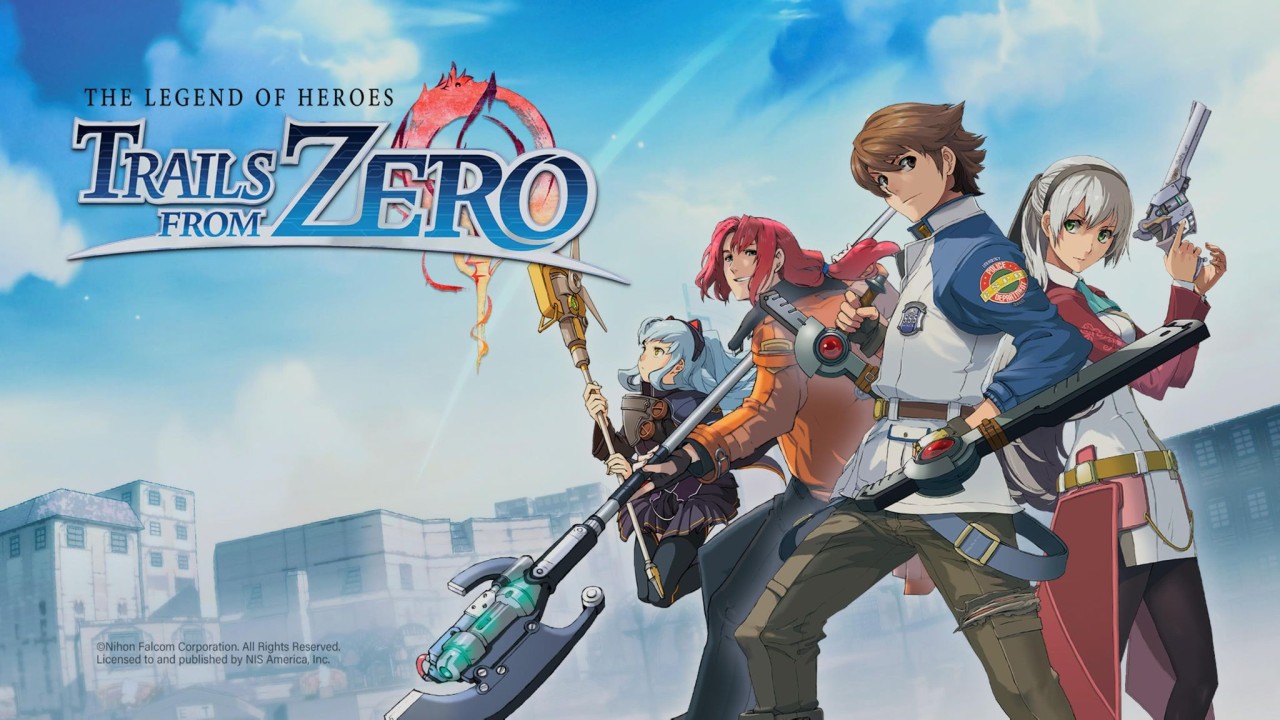First released in 2010 as a Japanese exclusive PSP game, The Legend of Heroes: Trails from Zero has finally seen an official Western release built off the back of a 2020 fan translation. There’s no doubt that this release is bolstered by the popularity and widespread acclaim of Falcom’s Trails of Cold Steel titles, but will Trails from Zero stack up?
As an upfront disclaimer, I haven’t played any previous releases in the Trails franchise (besides a bit of the first Cold Steel), but I’m well aware that every entry has connections to others. It’s a rich world packed with dozens of characters, each with their own histories. That said, I never felt like I’d missed out on much by not having played previous entries, but more like I’d get extra satisfaction: You can go in blind and still have a great time.
Small Scale Story, Big Payoffs
Trails from Zero takes place in the city of Crossbell. It’s a city caught between two opposing national powers that are both fighting for control of it. Because of this, Crossbell is rife with political struggles, corrupt people in power and an organised crime ring at the heart of it. Enter Lloyd Bannings, an 18-year-old newly appointed detective and Crossbell native returning to the city to work at the Police Department after leaving for 3 years following the death of his brother, Guy. Lloyd is living in the shadow of his brother, who was also a detective at the CPD, and the game spends a lot of time letting you see Lloyd’s struggles with this.
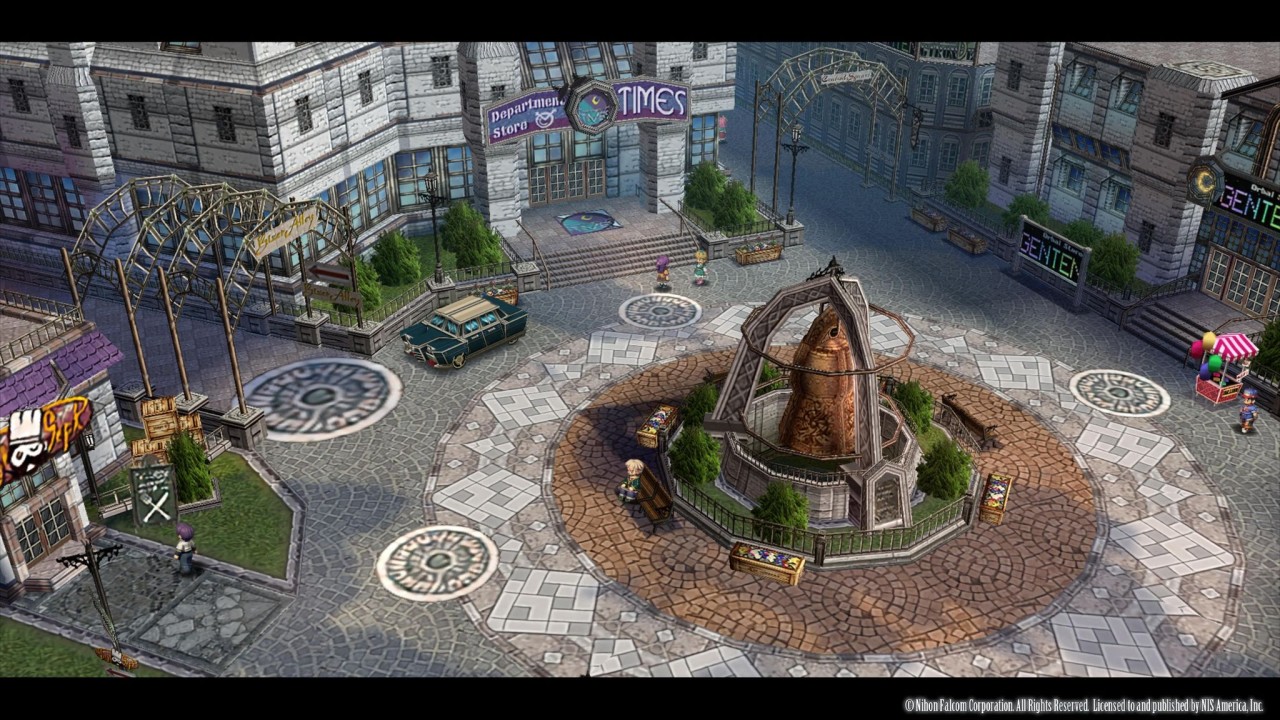
Upon entering Crossbell, Lloyd finds himself appointed to the Special Support Section, a new branch of the CPD formed to deal with any problems citizens are having. Lloyd is quickly introduced to the Chief of the SSS and the 3 other members of the squad: Elie Macdowel, Randy Orlando, and Tio Plato, and you follow the SSS through the first few months of their duties as they work to fix the cracks in Crossbells foundations.
The aspect I found with Trails from Zero that differentiates it from most JRPGs is that its story, for the most part, is relatively small scale: You’re dealing with crimes instead of killing gods. The world itself matches that scale. Crossbell and the surrounding areas don’t make for a massive area to explore, and it’s better because of it. By limiting the scope of the adventure, Trails from Zero can focus on the stuff that matters: Its story and characters.
What a Party
For me, a JRPG is only as good as its party and Trials from Zero excels in this aspect. Each character has a history that genuinely matters to the story but never feels shoehorned in for the sake of drama or some sudden heel turn. It takes its time to let you get to know the team and the city before it lays on the heavier elements of its story. For such a small-scale story, the game itself is pretty dense, and there’s probably as much dialogue as there is combat. It might be offputting, and the first two or three chapters are slow starters, but the payoff is outstanding. Without the buildup and discovery of who the team are beyond your first impressions, none of the game’s excellent later moments would hit even a fraction as hard.
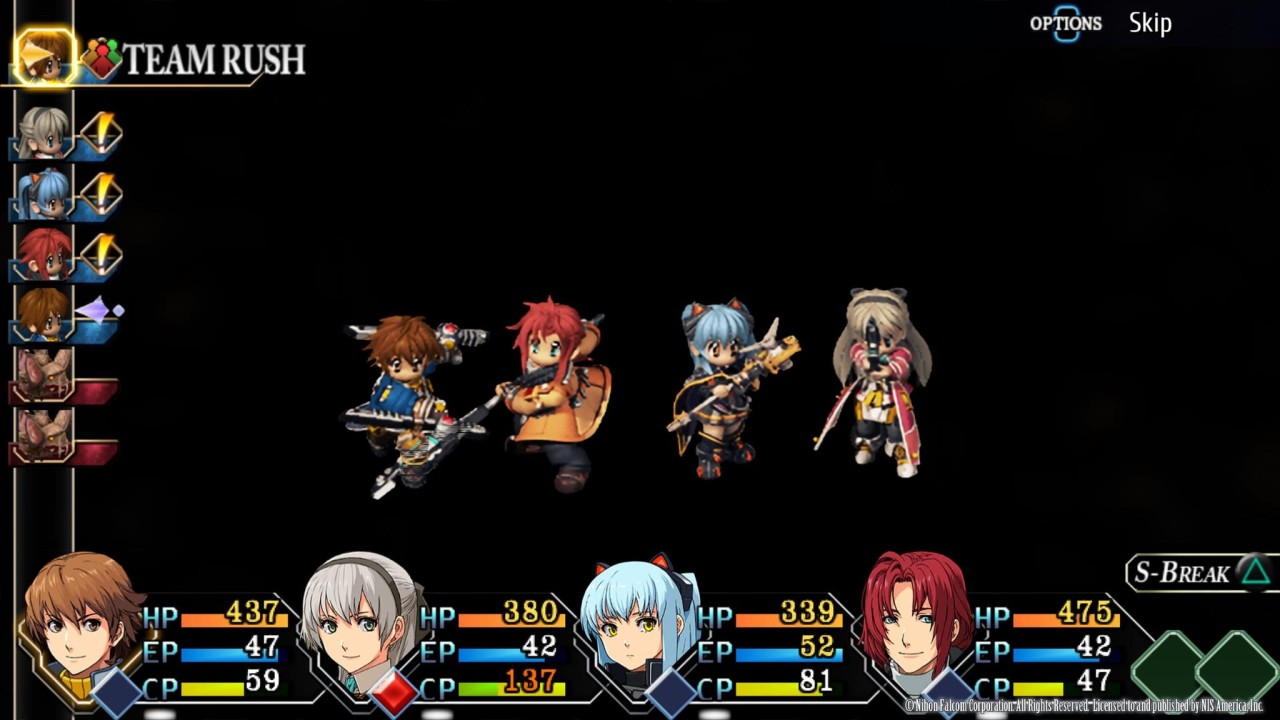
Besides the party of four, there are well over a dozen important characters in Trails from Zero, and each of them fits into its story excellently: there’s not a dud among them. You interact with them constantly throughout the story, but you can also take on optional Support Requests (side quests) from the terminal at SSS headquarters that lets you spend more time with them. They’re usually just a fetch quest, but the writing is so charming, and the world is so small that it never felt like a chore. By the end of the game, the side characters have had plenty of moments to shine and a part to play in the story, one that’s often as important as the main party.
To further encourage interacting with the people of Crossbell, the game gives basically every single NPC new dialogue after every major event as you make your rounds of the city. There’s so much to miss by only doing the main story. There are even secret Support Requests that you can get from talking to certain characters on specific days. It’s not afraid to let you miss things, which might sound like a negative, but I felt it more like a breath of fresh air. In so many games, NPCs feel inconsequential: Trails from Zero makes them people.
Beat Cops
The other side of Trails from Zero is combat. Be it gang members or massive monsters, I spent lots of my playtime fighting bad guys. The combat system in the Trails series is pretty great. While your party has things they’re naturally better suited for, as the player, you have a lot of control over what their abilities in combat are. There are also no random battles, enemies will appear on the map, and you can get the drop on them if you hit them from behind. Trails from Zero also mitigates the traditional JRPG grind by having enemies give you basically zero XP if you’re too high a level. It’s a simple but effective way to deal with it, and I welcomed it. Too many JRPGs expect grinding or will inflate difficulty by just making numbers bigger. By making grinding a non-issue, the game manages to keep the player moving through the story instead of bogging you down with 2 extra hours grinding just to beat a boss.
Each party member has a device called an Orbment, which is basically a flip phone with a bunch of slots in it. In these slots, you insert special items known as Quartz. These items can be crafted from materials you gain in combat. You can also buy Quartz or find them in chests throughout the world. There are 7 different elements of Quartz, and by mixing and matching these elements in certain combinations on each party member’s Orbment, you can unlock a variety of Arts (magic) that use up your EP meter. There are dozens of elemental combinations you can choose from to unlock various abilities, which can be changed any time outside of battle, allowing you to specialise each character based on the area you’re in and the weaknesses the enemies in that area have. It’s a great way to personalise your playstyle while adding variety for experimenting in new game+ or at the Hard and Nightmare difficulties.
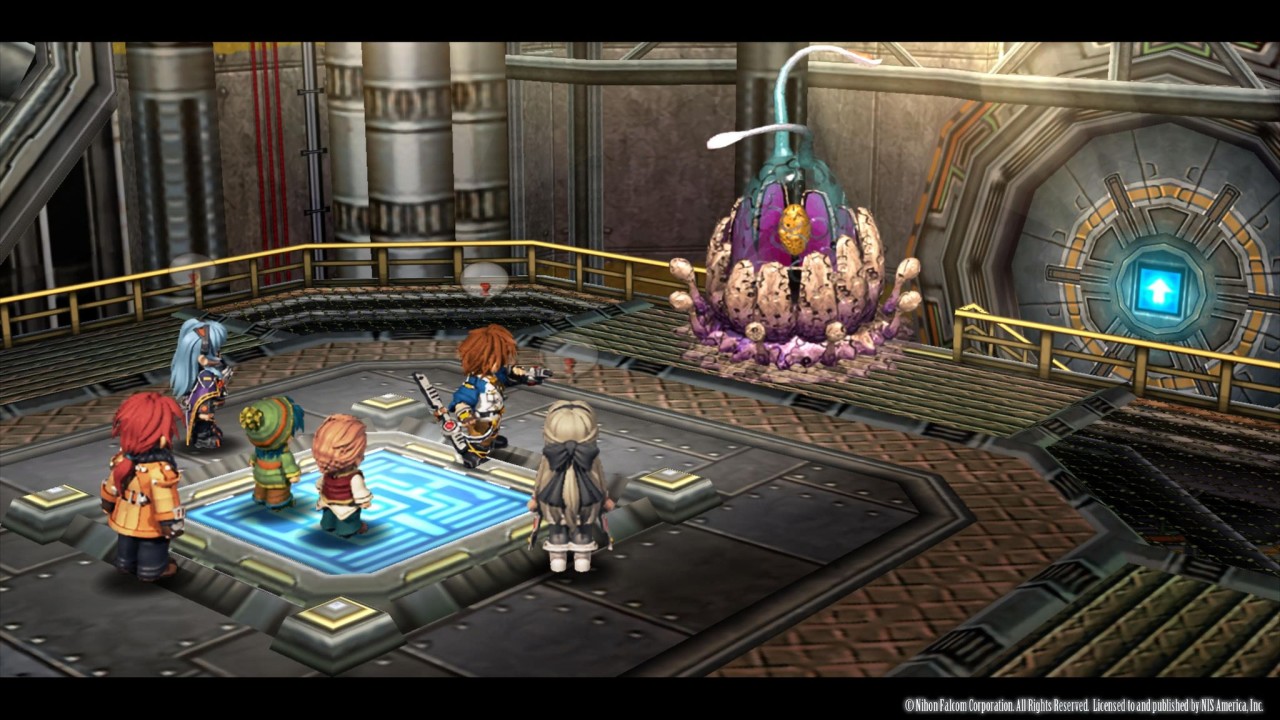
As you level the party, they’ll unlock various moves called Crafts which are skills that use the CP meter. These are much more specific to the character, and I found them all helpful at some point. While the game was never too much of a challenge, in its later stages, I definitely found myself using more of these specific skills in boss battles to buff my party or quickly end fights with a massive AoE attack. You also unlock Combo Crafts later in the game: Spend 100CP from two characters to use an extra powerful move that will often just kill regular enemies instantly.
There are also a couple of strategic elements with the combat. Characters aren’t in fixed positions: Combat is on a grid, and each character has a movement stat that can be altered by gear. Character positioning matters in tougher fights, so you can move to dodge an AoE or to line up a better special move to hit more enemies at once. There’s also the S-Break system. An S-Break lets you instantly cast the assigned move, regardless of the turn order, so long as the character has 100CP. I had Elie as my healer, so if the party got hit hard, I could pop her S-Break and instantly heal everyone at once. There’s a risk reward element to the CP gauge, too: You can overcharge it to 200 to get a much more powerful version of a character’s Craft, but if a character is knocked out before you spend the meter, it drops to zero. Do you use the move now for quick damage, or wait and maybe win the fight with one big attack? Combat is very systems-heavy, but it’s never overly complex: You’re immediately given the list of element combinations to unlock all the moves; it’s on the player to use that info to improve their party’s strength.
Off the Clock
There are plenty of side activities to enjoy as you journey through Crossbell and its surroundings. Trails from Zero has a few classic JRPG staples for the party to engage with alongside busting cases: fishing, cooking, and some good old-fashioned gambling.
I’m a sucker for casinos in JRPGs, and while they’re not the most flashy versions of casino games, Trails from Zero offers you blackjack, poker, roulette and slots. You exchange your cash for tokens to play these games so you can earn yourself prizes. I definitely spent an hour or two on poker to grab myself some good early-game armour.
By scanning enemies in combat, you can find their weaknesses, after which they’ll be added to your Combat Notebook. You can then take this to the CPD in exchange for some cash and upgrade materials.
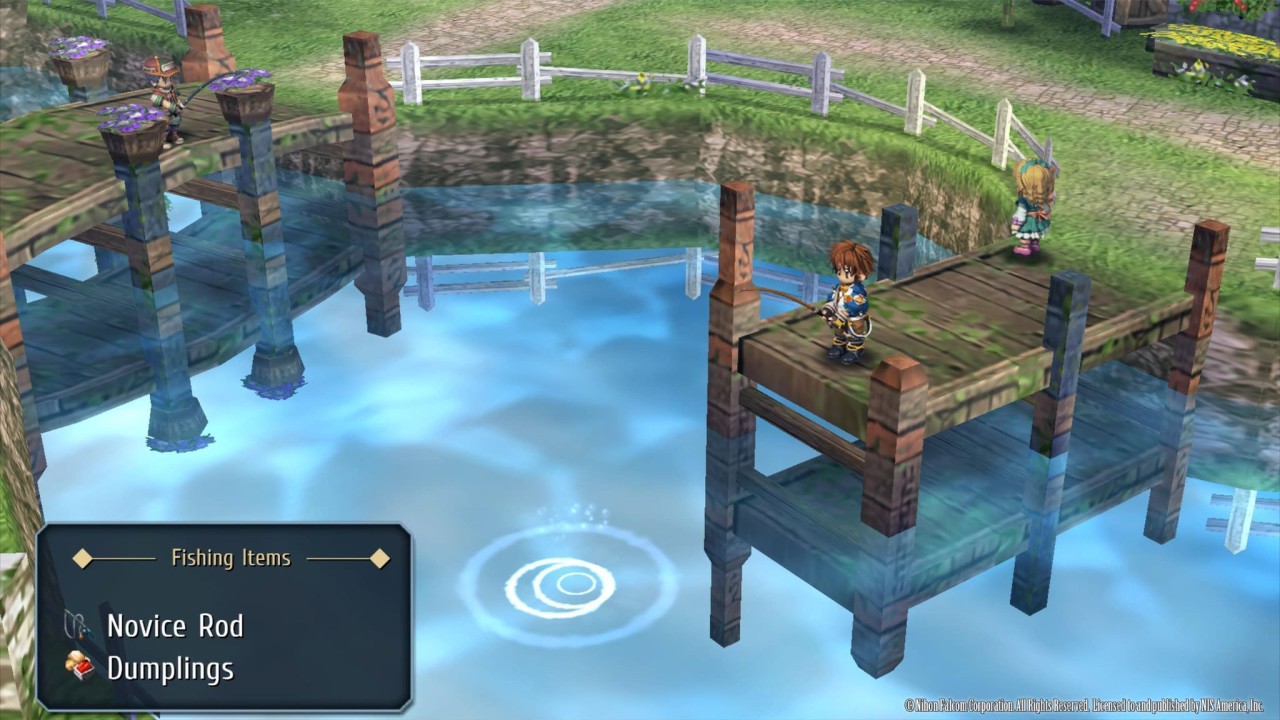
The fishing minigame is simple: Head to a fishing spot, pick your rod and bait and wait for a prompt. Hit the X button quick enough, and you’ll catch yourself a fish. There are a total of 24 fish in the game, and with each handful of new fish you hook, you can head to the Fishing Guild for a little reward. It’s simple, but it’s a nice change of pace.
There are also 24 recipes hidden throughout the game, and with the right ingredients, you can have a member of the party whip up some food. Each party member has recipes they’re good/bad at making, and every recipe has 3 possible outcomes. By picking the right or wrong member to make a dish, you can end up with a better or worse version of the base recipe. The food you cook can then be eaten in battle, and they tend to provide multiple, better effects when compared to regular items.
Timeless Style
The look and sound of Trails from Zero gave me an immense wave of nostalgia for the PS1 era of JRPGs. Games like Breath of Fire IV and Wild Arms were some of my favourites as a kid, so I’ve always had a soft spot for this style of sprites on chunky 3D backgrounds. And while newer games like Octopath Traveller have adopted the HD-2D style, with tons of bloom and particle effect, I prefer how Trails from Zero looks. Yes, the textures are muddy on PS4 (more on this soon), and the 3D is super boxy, but it was so damn charming that I didn’t really care. The soundtrack hit those same nostalgic feelings, and I found myself whistling/humming along as I familiarised myself with each area’s earworm of a theme.
Let’s Talk About the Ports
While I had a great time with Trails from Zero, it’s got one major caveat specific to its PS4 release. The PS4 port is a direct port of the Japanese version with the text translated into English. The only quality-of-life feature is the aforementioned High-Speed Mode. Honestly, this is a big deal, though. I played the bulk of the game in High-Speed Mode. My playthrough was about 40 hours, including a lot of side content, but it’d likely be closer to 60 without it. The PC and Switch versions of Trails from Zero were handled by an outside studio that added more QoL improvements and some extra polish to the game’s visuals. I put the PS4 version alongside the Switch version, and the visual differences were immediately transparent. Textures are much clearer, it has dynamic lighting, you can adjust how fast the High-Speed Mode is (both in battle and out as separate sliders), there are UI scaling options, autosaves, and it adds a message log so you can go back and read any dialogue you may have skipped. It is a massive improvement, and if you have the means to get it on the Switch or PC, you absolutely should. I debated dropping the PS4 version’s score as it’s the objectively worst platform to play it on, but I honestly can’t bring myself to do it. I enjoyed it too much to care, but I couldn’t go without mentioning it.
The Legend of Heroes: Trails from Zero is a truly special JRPG. Its focus on characters and worldbuilding set up a smaller, far more personal story. Its highly customisable skill system meant that combat never felt stale. I haven’t felt this way about a JRPG in a long time, and I cannot wait to catch up with Crossbell and its cast of characters again when the sequel launches in 2023. It’s not just one of my favourite games of 2022; it’s among my favourite games of all time.

The Legend of Heroes: Trails from Zero is available now on PlayStation 4 (review platform), Nintendo Switch, and PC.
Developer: Nihon Falcom
Publisher: NIS America
Disclaimer: In order to complete this review, we were provided with a promotional code from the publisher. For our full review policy, please go here.
If you enjoyed this article or any more of our content, please consider our Patreon.
Make sure to follow Finger Guns on our social channels. Twitter, Facebook, Twitch, Spotify or Apple Podcasts – to keep up to date on our news, reviews and features.
